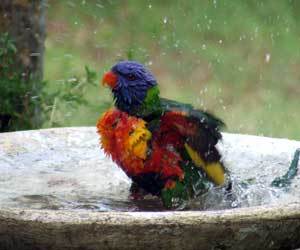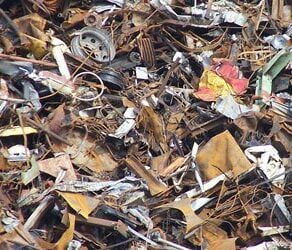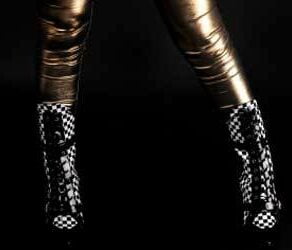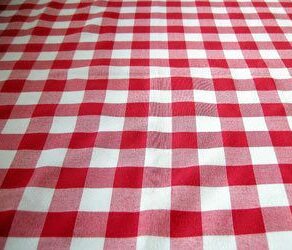While most birds are pretty good at keeping themselves clean, their cages can get filthy, fast. Their debris can get into the air and irritate your guests’ eyes and lungs. You should clean your bird’s cage at least once a week.
most birds are pretty good at keeping themselves clean, their cages can get filthy, fast. Their debris can get into the air and irritate your guests’ eyes and lungs. You should clean your bird’s cage at least once a week.
Prepare for the Cleaning
1. Empty the cage
Before you can begin to clean, you need to empty the following items out of the cage: you bird (move him to a safe location in another room), his food and water dishes and any toys, perches or other miscellaneous possessions your bird may have. Also, take the cage and dump it over the trash can (or use a handheld vacuum if your cage is too large for this) to remove any food, droppings or other debris that may be loose on the bottom of the cage. Also, remove the liner if you have one and throw it away.
*If you’re not moving your bird to another cage, make sure the windows and doors in the other room are closed so that he doesn’t fly out.
2. Mix your cleaning solution
You have to be careful when choosing a cleaning solution for your cage to pick one that is safe for birds, who are particularly sensitive to chemicals. A few bird-safe ones you can try are:
- Mild dish soap for hand washing
- Baking soda
- Table vinegar
In a small bowl, about cereal-bowl size, create a half and half mixture of your cleaning agent and warm, but not scalding, water. If you want, you can pour the solution into a clean misting bottle to make it easier to apply the solution to the cage.
*You can also use a commercial bird cage cleaner, such as Cage Wizard, most of which are already conveniently packaged in spray bottles.
Cleaning Instructions
3. Rinse the cage
Before you hit the cage with your cleaning solution, you want to get out whatever gunk you can with plain, unadulterated water. To do this, the easiest thing to do is to put the cage in the bathtub or shower and just turn on the showerhead. Use relatively hot water, but not at the risk of burning yourself. If you don’t have a tub or shower available, you can use a garden hose with a spray nozzle to the same effect.
4. Scrub the cage
Once you’ve given the cage a good rinse, grab a scrub brush, kitchen brush or scrubber-backed sponge and your bowl or bottle of cleaning solution and get to work. If there are any tiny cracks and crevices in the cage where the brush or sponge won’t fit, you can employ an old toothbrush instead. Be sure to clean the top and bottom of the base as well as the bars of the cage.
If you’re using commercial cage cleaner, spray the cage and then proceed in the same manner.
5. Rinse the cage again
After you’ve gotten all of the gunk off of the cage (let it soak in the tub if it is not coming off easily) you’ll need to rinse it again to remove the cleaning solution. Don’t worry so much about the temperature of the water this time. The main point is to remove any residue so that your bird doesn’t slip on or get sick from ingesting the cleaning solution.
6. Clean your bird’s accessories
Before you put your bird’s food dish, perches and other accoutrements back in the cage, clean them with the same solution you used to clean the cage. Just dunk them in the bowl (make a new bowl of solution if it is too dirty from cleaning the cage) or spray them.
Alternately, you can clean many of your bird’s dishes and toys in the dishwasher, reducing some of the manual labor of this task. (Most plastic and vinyl toys and dishes are dishwasher safe. If you’re not sure, contact the manufacturer.)
*If you have trouble removing stuck-on gunk from a wooden perch, it is possible to sand off the trouble spots. Just pick up some sandpaper at your local hardware or home improvement store.
7. Kill the germs, if needed
If your bird has been sick, or the cage was especially dirty, you will want to disinfect it in order to squelch any bacteria. The easiest way, and the safest for your bird, is to use a disinfectant spray made specifically for bird cages. This should be available at your local pet supply store. Simply spray the cage and accessories, making sure to apply it to every surface.
If you’re not able to find a disinfectant spray appropriate for bird cages, you can use a solution of a half a cup of bleach to a gallon of water. You can apply this solution to the cage and accessories with the scrub brush or tooth brush. Be extremely careful though, as bleach can be very harmful to your bird. If you do decide to use bleach, make sure the room is well-ventilated and the fumes have dissipated completely before you bring your bird back. Also, rinse the cage and toys several times with warm water to be absolutely certain that you’ve removed all of the bleach solution.
Note: Any toys or dishes you cleaned in the dishwasher should already be disinfected from that process and won’t need to be disinfected further.
8. Dry the cage and accessories
Once you’re positive you’ve gotten all of the cleaning solution and/or bleach out of your bird’s cage, you can either put it in the sun to air dry or wipe it out with a paper towel or kitchen towel. The cage must be entirely dry before you can return it to your bird.
9. Clean the floor under the cage
Another good thing to do while you have your bird’s cage out of the way is to clean the floor under the spot where the cage sits or hangs to remove any droppings, food or other debris that might have slipped out. Just sweep or mop as you normally wood, but be mindful of cleaning fumes that may harm your bird. Again, make sure the fumes have dissipated before returning the bird to the room.
10. Return the bird to the cage
Once you have a clean, dry, cage and clean, dry, accessories, it’s time to put your bird back in his cage. No doubt, he will be overjoyed by the site of a crisp, clean home.
Keeping your bird’s cage clean
A good way to keep the cage clean on a daily basis is to provide your bird with a cage liner. This doesn’t have to be an expensive fix. You can even use regular newspaper. This way, if the bottom of the cage gets dirty, you can simply remove the liner and replace it with a fresh one. This doesn’t mean you get out of cleaning altogether, but it does help to curtail it quite a bit.
Liner or no liner, you’ll want to give Polly’s house a good scrub down at least once a month. And the bottom of the cage and food dishes should be cleaned once a week or more often.









Not that I’m a huge bird expert, and I haven’t even owned a bird for decades, BUT it would seem to me to be good common sense that if you are going to even consider using the same solution on your bird’s accessories (especially food/water dishes) that you used to clean the bottom of its cage, you should do so BEFORE you clean the bottom of the cage.